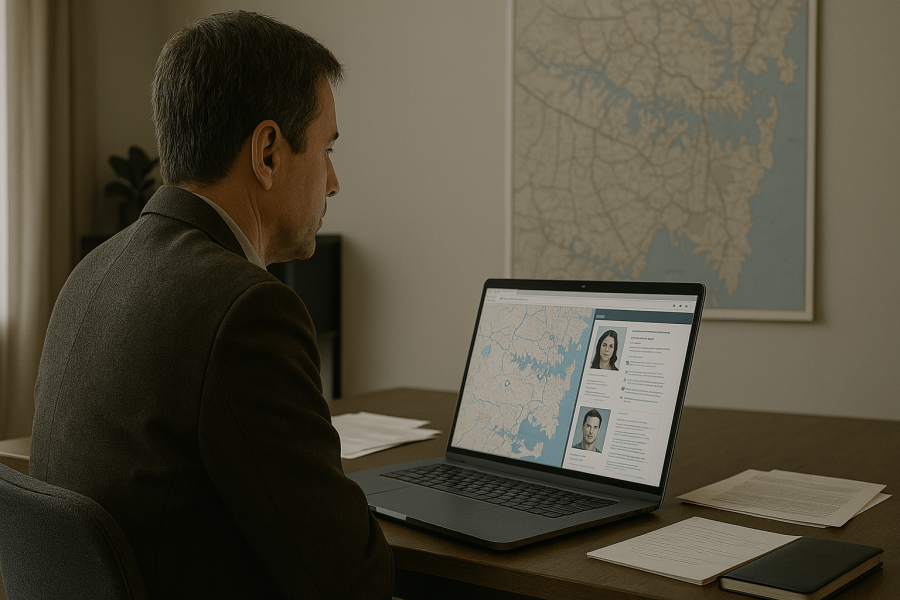In an era where privacy is hard to come by, bug sweeps can be considered one of the last lines of defence against malicious surveillance. Bug sweeps, or Technical Surveillance Countermeasures (TSCM), are not the makings of a spy thriller – they are a real-world necessity. Businesses, homes, government offices and vehicles can be compromised by hidden cameras, GPS trackers and tiny microphones, potentially turning private moments into public knowledge.
Imagine discussing a groundbreaking business idea, only to have it stolen and patented by a competitor who had planted a listening device in your meeting room. Or consider the feelings of violation when personal and private conversations at home are recorded without consent. These aren’t just hypothetical scenarios, they’re real privacy breaches that can have devastating consequences.
A bug sweep becomes essential in various situations.
- In the Business Realm: Confidentiality is the bedrock of corporate integrity. Bug sweeps help protect your trade secrets and important strategic discussions from industrial espionage.
- Personal Privacy: Whether it’s a domestic dispute or protection against malicious stalkers, ensuring your personal environment is free from prying eyes and ears is pivotal.
- Government Agencies: Governments are not immune from compromise, with an Australian embassy having been bugged in 2022. A timely bug sweep can prevent such problems.
- Transitional Phases: Moving to a new home or office? Bug sweeps can secure your space before you even settle in, preventing potential eavesdropping from day one.
How To Find A Listening Bug In Your House
This specialised process involves a combination of electronic and physical examination techniques to detect covert devices. State-of-the-art equipment is at the heart of a professional’s toolkit. Thermal imaging cameras, such as the FLIR, are deployed to detect heat signatures that could reveal a hidden device. Frequency scanners like the OSCOR Green and RFD-5 sweep across a broad spectrum – from the lower kilohertz to the upper gigahertz range – to identify active transmissions. These scanners can pinpoint a variety of devices, including conventional RF transmitters, Bluetooth, Wi-Fi, and cellular network devices. Another critical piece of technology is the Non-Linear Junction Detector (NLJD), which is specifically designed to find electronic components that may be dormant during the sweep, thereby not emitting any active signals. This ensures that even non-transmitting devices don’t slip under the radar.
An investigator may inspect any wireless routers and access points in the premises, using sophisticated software to uncover any rogue connections that could be syphoning information. Power outlets are examined for devices that are commonly hidden behind the wall unit. Even VoIP phones and telephone handsets can be scrutinised using advanced diagnostic tools to uncover any embedded surveillance devices. TSCM experts may also employ visual inspection tools, such as fibre optic borescopes, to peer into hard-to-reach places like ventilation ducts, ensuring no space is left unchecked. The entire process is a blend of technical and traditional detective work, offering not just a defence against eavesdropping but also peace of mind that one’s private affairs are well-protected.
So, if you’ve been wondering how to detect listening devices in your home or office, you can see that it is a technical exercise and that you need a skilled technician to conduct the work properly.
The Benefits of a Bug Sweep
Conducting a bug sweep can result in several benefits. Firstly, you get an answer as to whether your home, office or vehicle is compromised by a surveillance device and the resultant peace of mind that comes from knowing the truth. In a domestic setting, an assurance that your communications are private can reinforce trust. Knowing your conversations are confidential allows you to speak freely, fostering a more authentic and creative environment in business. Assuring clients and partners that your discussions are secure can enhance your reputation and strengthen relationships. Bug sweeps also signify a proactive approach to legal compliance, ensuring you’re not unknowingly breaching the privacy of your workers, clients, partners, suppliers or others.
How To Block Out Listening Devices
It is generally illegal to use a device that blocks the type of frequencies over which most covert bugs transmit and different bugs operate in different ways in any event. Therefore, it is difficult to prevent the use of bugs, especially as some are disguised these days as everyday items like smoke detectors, stereos and the like. The best course of action is to conduct a sweep and consult a licensed investigator/security professional to ensure your communications are secure.
Covert listening or video bugs are certainly not the only way that you can be monitored and there are today a broad range of security risks that individuals, businesses and government bodies face. For example, it is possible to install spyware on a phone that enables someone to listen to your conversations and monitor your location. Lyonswood Investigations and Forensic Group has over 40 years of experience assisting clients to identify and prevent all forms of compromise, including bugs, surveillance investigations and hacking. We can help you ensure your private conversations remain just that – private. Get in touch for a consultation today.


